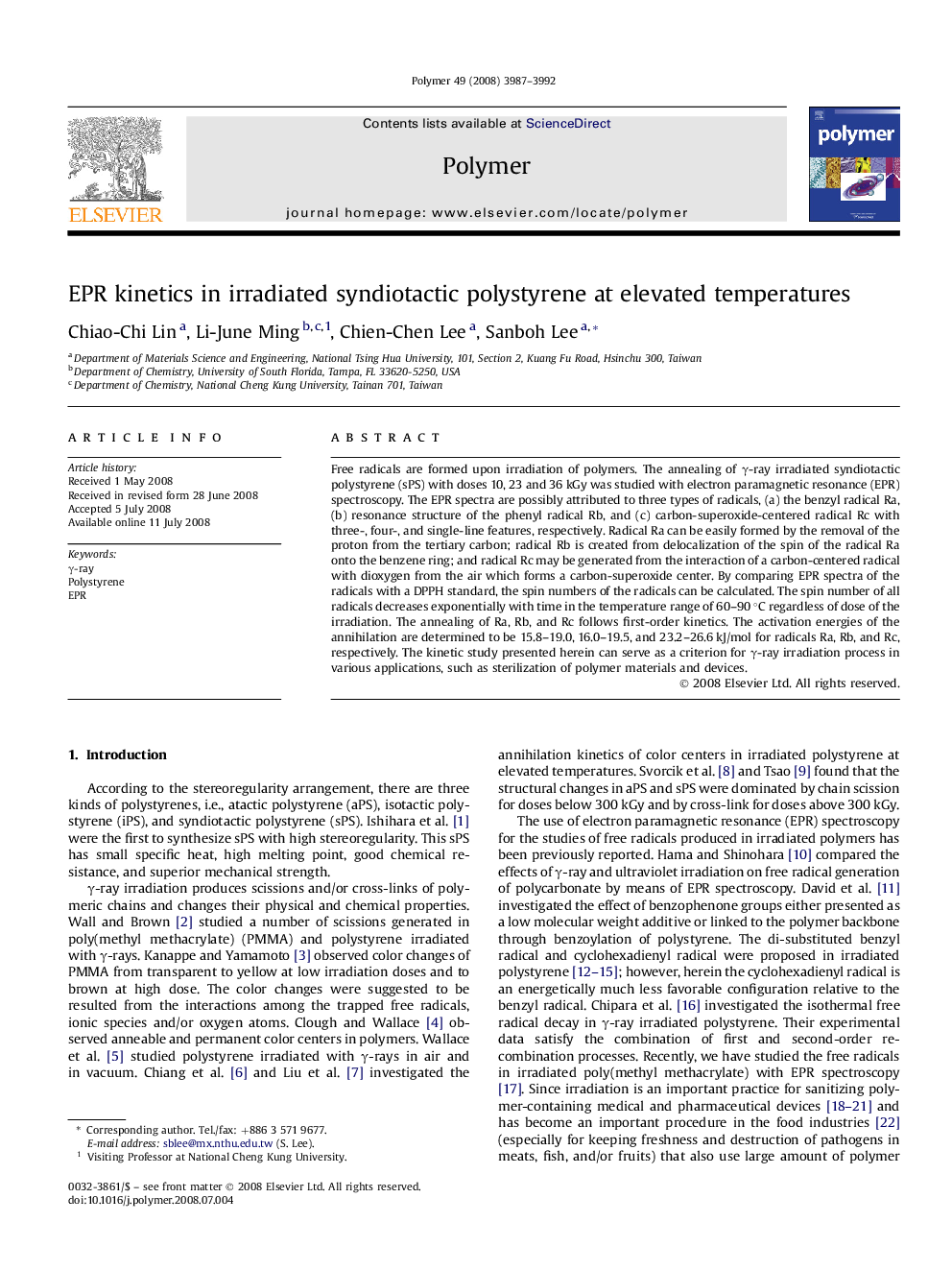| Article ID | Journal | Published Year | Pages | File Type |
|---|---|---|---|---|
| 5186817 | Polymer | 2008 | 6 Pages |
Free radicals are formed upon irradiation of polymers. The annealing of γ-ray irradiated syndiotactic polystyrene (sPS) with doses 10, 23 and 36 kGy was studied with electron paramagnetic resonance (EPR) spectroscopy. The EPR spectra are possibly attributed to three types of radicals, (a) the benzyl radical Ra, (b) resonance structure of the phenyl radical Rb, and (c) carbon-superoxide-centered radical Rc with three-, four-, and single-line features, respectively. Radical Ra can be easily formed by the removal of the proton from the tertiary carbon; radical Rb is created from delocalization of the spin of the radical Ra onto the benzene ring; and radical Rc may be generated from the interaction of a carbon-centered radical with dioxygen from the air which forms a carbon-superoxide center. By comparing EPR spectra of the radicals with a DPPH standard, the spin numbers of the radicals can be calculated. The spin number of all radicals decreases exponentially with time in the temperature range of 60-90 °C regardless of dose of the irradiation. The annealing of Ra, Rb, and Rc follows first-order kinetics. The activation energies of the annihilation are determined to be 15.8-19.0, 16.0-19.5, and 23.2-26.6 kJ/mol for radicals Ra, Rb, and Rc, respectively. The kinetic study presented herein can serve as a criterion for γ-ray irradiation process in various applications, such as sterilization of polymer materials and devices.
Graphical abstractDownload full-size image
